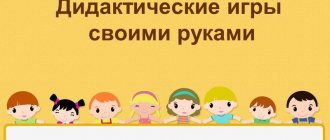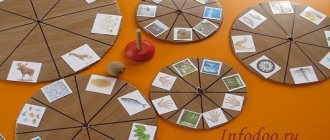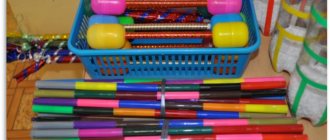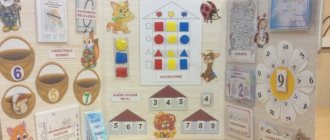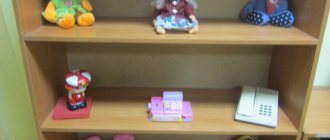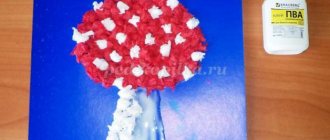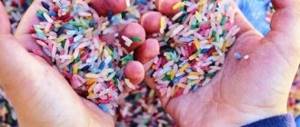Educational games with clothespins - sorting
You can sort colored clothespins by attaching them to pre-made colored blanks or to cups. You can use more than just colored clothespins for sorting. But also those on which paper pictures are pre-glued. For example, you can ask your child to separate clothespins with vegetables from clothespins with animals, etc.
Educational game with clothespins - theater
This game depends entirely on your imagination. To make theater actors out of clothespins, you can glue paper pictures onto the clothespins. Or paint wooden clothespins by hand. You can use clothespins to make soldiers or fairy tale heroes and stage a theatrical performance. The fairy tale turnip is very suitable for production. Ask your child to attach the characters to each other, like in a fairy tale.
Games with clothespins
Greetings, dear friends. If you often think about how to diversify your leisure time with your child, how to make educational activities for kids more entertaining, and children's games more educational, then this material will be especially valuable for you. This time we decided to talk about... clothespins. About ordinary clothespins that are found in every home. It turns out that an ordinary household item can become the basis for extraordinary activities with children of different ages - activities that are very interesting and very useful for children's development.
6 reasons to use clothespins for play
Reason 1: Availability
You can start playing right now, because you probably have clothespins in your house. If clothespins are not enough, you can buy them at any hardware store. No need to search, order, wait for delivery. Clothespins are available to everyone.
Reason 2: Variability
Modern industry produces clothespins in a huge range. You can choose plastic and wood, playing with the different textures of these materials. There are tight clothespins, and there are softer ones, which may not be so good for use for their intended purpose, but are excellent as educational material even for children under one year old. And the variety of colors opens up truly impressive opportunities for planning entire series of educational games.
Reason 3: Development of fine motor skills
By opening clothespins, hooking and removing them, children strengthen their fingers and train the small muscles of the hand to perform efforts, controlling the force of pressing. All this provides an invaluable contribution to the development of fine motor skills. And fine motor skills, let us remind you, pull a whole cart of important abilities: they affect speech, memory, attentiveness, speed of reactions and thought processes.
Reason 4: Development of creative intelligence
Games with clothespins are basically based on the child's imagination. The child is asked to imagine that the clothespin is the rays of the sun, the needles of a hedgehog, the tail of a fish, etc. By activating the imagination, you develop creative abilities in the child.
Reason 5: Developing out-of-the-box thinking
The ability to find unusual uses for familiar objects is a solid foundation for creativity and out-of-the-box thinking. Children, for whom from a very tender age it becomes obvious that behind every object there can be a whole world hidden, unknown and alluring, subsequently demonstrate excellent abilities for effective solutions to even the most confusing problems.
Reason 6: Math Tutorial
Clothespins are very convenient to use for teaching mathematics, mastering ordinal and quantitative counting with their help. They will help you understand important math concepts such as greater than, less than, and equal to. Overall, clothespins are an ideal material for math games with preschoolers.
Do you want your child to be resourceful, dexterous, creative and self-confident, so that he does not experience boredom and easily solves the most difficult problems? Start playing with clothespins as early as possible!
Educational games with clothespins
A clothespin is an educational toy in itself. Already at 7–8 months, the baby can be offered for acquaintance. Of course, first choose soft clothespins with a gentle grip and supervise children's play for the baby's safety. As the child gets older, playing with clothespins should become more complex. You can come up with tasks yourself or use ready-made templates, some of which we will describe below.
Please note that for the described exercises you will need auxiliary materials:
- clothespins of different colors and sizes, different shapes, from different materials;
- small toys, cards with drawings, images of letters and numbers that can be attached to clothespins (with glue or tape);
- boxes and cans - transparent and colored (different colors);
- ribbons made of different materials, different thicknesses, ropes, laces;
- special templates: color images printed on thick sheets of A4 or A5 format (Christmas tree, sun, hedgehog, fish, tiger cub, cockerel, etc.) - to extend the life of the templates, we recommend laminating them;
- rulers, thick rectangles made of thick cardboard, as well as circles made of thick cardboard, divided into sectors.
Simple games with clothespins
- Show your child how to open a clothespin. Let him repeat it.
- Attach a few clothespins to your clothes and ask your child to remove them. Now let the clothespins be on the baby’s clothes. In this case, you can comment on each removed clothespin with a count.
- Attach clothespins in different places in the apartment (on tablecloths, curtains, carpet, on the handle of a chest of drawers, etc.), and the child must find and collect them all in the allotted time;
- Put clothespins on different objects: a string, a rope (you can make beads from small clothespins), a ruler, a box;
- Give your child a jar with a lid, in which a hole has been made in advance the size of a clothespin. Let your child insert clothespins into these holes. If you have clothespins of different sizes, you can prepare your own jar for each. You will get the simplest sorter for the little ones.
- Clothespins can be sorted into different boxes according to different principles - by color, shape, size.
- Give your child the prepared template and ask him to add clothespins to it. In this case, you can accompany the game with a story.
For example, like this:
The sun was running across the sky. It was beautiful, beautiful. It was in such a hurry to warm all the children on Earth with its yellow rays that it lost them in its haste. But kind Vanechka collected all the rays and returned them to the Sun, and it became beautiful again, as before.
If you place clothespins of several colors in front of the child, the baby will need to not only successfully attach the “rays”, but also choose only yellow material from the available options.
Games with clothespins for the development of logical thinking in early preschool age
- Attach a row of clothespins to the top side of the rectangle, alternating them according to different features.
Example:
Big blue, small red, big yellow, small green...
Choose the sequence randomly or with a certain repetition period.
Pass the rectangle to the child and ask him to repeat the drawing on the other side.
- Let the child put on clothespins (on a rope, string, ruler - it doesn’t matter), following your verbal commands:
- First a small clothespin, then a medium one, then a large one.
- The first clothespin is yellow, then 2 are blue, and at the end is red.
- We alternate large and small clothespins.
- Stretch several ropes of different thicknesses around the room. Now you can come up with tasks:
- We put clothespins on the ropes so that the thickest one has the most clothespins, and the thinnest one has the least.
- We put the smallest clothespins on the thick rope, the largest ones on the thin one, and green clothespins on the middle one;
- There are red, blue and yellow clothespins. There should be no blue or yellow clothespins on a thick rope. Thin ones cannot be green. The middle rope can have any clothespins except blue ones.
Games with clothespins to develop attention and memory
- Repetition game . You need several clothespins with pictures glued on them. These can be objects of living and inanimate nature, geometric shapes of different colors, flags, hearts... Place several clothespins on the rectangle (depending on the age of the child, this can be from 3 to 10 images). Give your child a few minutes to look at the objects, name them in order, and remember them. Then remove the clothespins, and the child must put them on again on his own, repeating the original sequence from memory.
- What changed . This game is similar to the previous one. Only you don’t remove all the clothespins, but change something in their sequence. You can remove some items, add new clothespins, or swap clothespins. Naturally, the younger the child, the fewer changes there should be. It is important that the level of the task matches the child’s abilities. Otherwise, interest in the game will quickly be lost and the developmental activity will not be successful.
Games with clothespins to consolidate acquired knowledge
Clothes pins are very convenient to use to reinforce a wide variety of concepts: colors, shapes, numbers, letters. Due to the similar principle of operation, all these games can be conditionally combined into the “Field of Miracles” category.
- prepare a field - a circle of thick cardboard;
- divide the circle into sectors;
- each sector has its own image, with which the child will have to connect clothespins with drawings.
Examples:
- Different objects in different quantities are drawn on the sectors. The first one has 3 chickens, the second one has 4 hearts, the third one has 6 candies, etc. The child first carefully studies the “Field of Miracles,” naming all the objects and counting their number. And now he needs to put on a clothespin with a number attached to each sector. Of course, the number must correspond to the number of objects depicted.
- The sectors contain domestic animals. On the clothespins are their babies. An excellent game on the theme “Moms and Babies”.
- There are animals in the sectors. On the clothespins is their food. Who eats what? Come on, let's remember!
- Words are written on the sectors. There are drawings on the clothespins. Let's connect the word with the picture! Of course, to do this you already need to be able to read, and then this version of the game will be an excellent trainer for consolidating reading skills.
Eureka Tips
- Don't be afraid to change the rules, experiment, combine different games into one, or divide one game into several independent tasks.
- If you need interesting activities for a group of children, add a competitive element to the games. For example, children should be divided into two teams. The red ones collect red clothespins in a red bucket, and the green ones, respectively, collect green clothespins in a green bucket. The more clothespins and the more original they are distributed (on participants, interior elements, etc.), the more exciting the competition will be.
- If you attach images of characters from your favorite fairy tales to clothespins, you can act out a home clothespin theater (similar to a puppet or finger theater).
- Clothespins can be used to study time by rearranging them on a homemade clock face instead of the minute and hour hands.
What interesting games with clothespins do you know? You can share your experience in game creation in the comments to the article or in our VKontakte group.
Happy parenting, friends!

